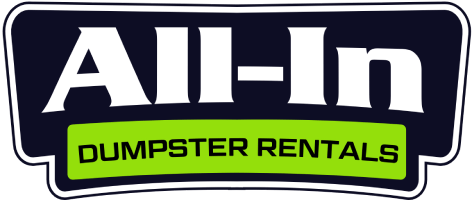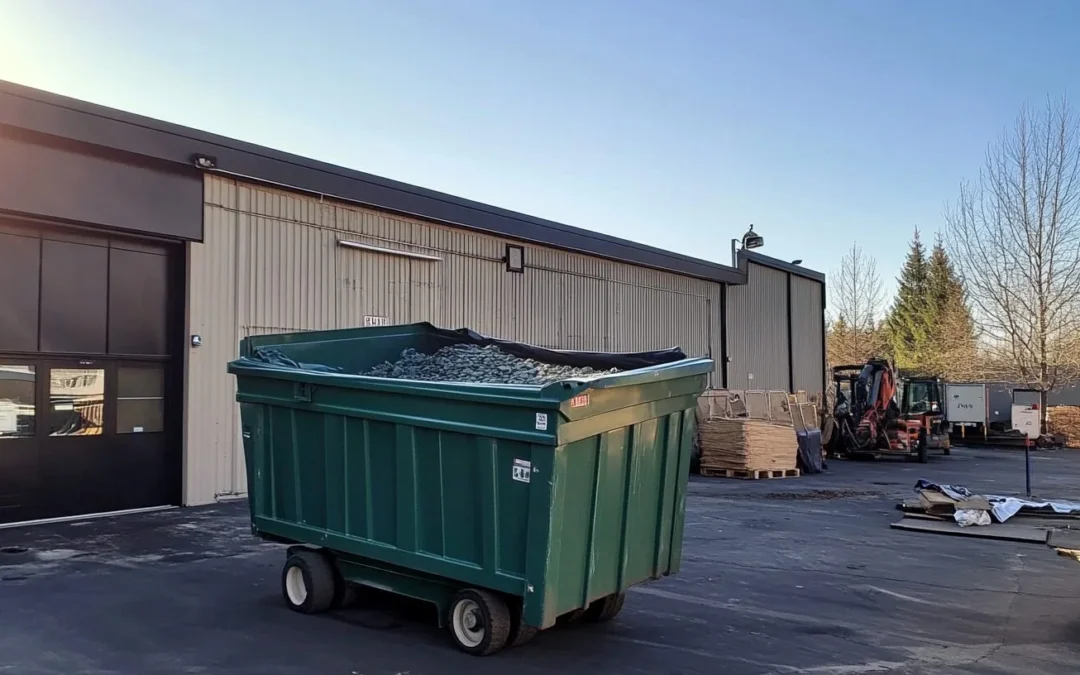Understanding the Size and Capacity of a 10-Yard Roll Off Dumpster
A 10-yard roll off dumpster represents an ideal middle ground for waste management needs that fall between regular trash collection and large-scale industrial solutions. These versatile containers provide sufficient capacity for significant projects while maintaining a manageable footprint suitable for various residential and commercial environments.
This comprehensive guide will walk you through everything you need to know about 10-yard dumpsters, from their exact dimensions to practical capacity comparisons using everyday objects. By the end, you’ll have a clear understanding of what to expect when your dumpster arrives, how much material it can accommodate, and the logistics involved in ensuring a smooth rental experience.
Physical Dimensions and Capacity
Understanding the precise measurements of a 10-yard dumpster helps you allocate appropriate space for delivery and ensure it meets your waste removal requirements:
- Length: 12 feet (average)
- Width: 8 feet (standard)
- Height: 3.5 to 4 feet (varies by provider)
- Volume: 10 cubic yards (approximately 270 cubic feet)
For a visual reference, imagine two standard sedans parked side by side—that roughly represents the footprint a 10-yard dumpster occupies on your property. The container stands approximately waist-high for most adults, making it accessible for loading without requiring a ladder or excessive lifting in most situations.
Weight capacity is a crucial consideration when selecting this dumpster size. Most 10-yard containers can handle between 2 and 4 tons of material, depending on local regulations and provider policies. Heavy materials like concrete, dirt, and roofing shingles can quickly exceed weight limits even before the container appears full, potentially resulting in overage charges or necessitating multiple dumpster rentals to complete your project.
Visualizing Capacity in Practical Terms
A 10-yard dumpster typically accommodates between 80-100 regular household trash bags, providing substantial capacity for cleanout projects. This volume makes it perfect for tasks generating more waste than weekly pickup services can handle.
Furniture Capacity
In terms of furniture, a 10-yard roll off dumpster can typically fit approximately three full-size sofas, four standard mattresses, or a complete dining room set including table, chairs, and sideboard. The container comfortably accommodates larger household items without wasting space on an unnecessarily large dumpster.
Construction Debris Capacity
Construction debris fills space differently based on material density. A 10-yard container can typically handle about 3 tons of concrete or brick, 4-5 squares of asphalt shingles (covering roughly 400-500 square feet of roofing), or the demolition waste from a standard-sized bathroom renovation.
Landscaping Debris Capacity
For yard waste, one 10-yard dumpster accommodates approximately 10-12 mature shrubs with root balls, the trimmings from 5-6 large trees, or enough grass and leaf clippings to clear a quarter-acre property after seasonal maintenance.
The “fill line” inside these containers serves as an important capacity indicator. Exceeding this marked level creates safety hazards during transport and may result in additional fees from your rental provider.
Common Use Scenarios
The 10-yard container strikes an excellent balance for numerous waste removal challenges. Here’s how this versatile dumpster fits into different projects and environments:
Residential Renovation Projects
Weekend warriors tackling bathroom remodels find these containers ideal for fixtures, tile, drywall, and old vanities. The compact footprint fits neatly in most driveways while providing enough volume to clear out demolition debris and packaging waste from new materials and fixtures.
Small Commercial Cleanouts
Retail shops and small businesses appreciate the manageable dimensions when refreshing inventory or upgrading store fixtures. The container handles multiple display units, shelving systems, and accumulated storage room clutter without overwhelming limited parking areas or service entrances.
Office Relocations
Companies moving to new locations use these containers to dispose of outdated furniture, broken equipment, and accumulated paper waste. The height allows easy loading of file cabinets, cubicle partitions, and conference tables that won’t be making the transition to fresh quarters.
Community Events and Festivals
Event organizers rely on these right-sized containers to manage waste from small to medium gatherings. The capacity handles food service items, decorations, and packaging from several hundred attendees while remaining discreet enough not to detract from festivities.
Yard Cleanup and Landscaping Projects
Homeowners refreshing outdoor spaces find ample room for shrub removal, small tree limbs, and landscaping debris. Spring cleanups become remarkably more efficient with a dedicated container that eliminates countless trips to local yard waste facilities.
Practical Considerations for Placement
Your dumpster delivery requires adequate space and proper surface conditions to ensure success. Concrete driveways, asphalt parking areas, and compacted gravel provide sturdy foundations that prevent damage and sinking under heavy loads.
Most rental providers recommend at least 60 feet of vertical clearance and 12 feet of width for their delivery trucks to operate safely. Power lines, tree branches, and narrow gates represent potential obstacles that might necessitate special delivery arrangements or alternative placement locations.
Some municipalities require permits for temporary dumpster placement, especially for containers sitting on public streets or sidewalks. Check with local authorities at least a week before delivery to avoid potential fines or delays that could derail your project timeline.
Accessibility remains crucial throughout your rental period, not just during delivery. Consider how other vehicles may need to navigate around the container and whether placement might block critical access to garages, business entrances, or emergency exits during your project.
The Rental Process Explained
Getting a 10-yard roll off dumpster delivered involves a straightforward process designed to accommodate your project timeline and waste disposal needs. The rental experience typically unfolds through these key steps:
- Initial scheduling requires booking your delivery at least 3-5 business days in advance, with peak seasons often demanding longer lead times.
- Delivery coordination involves confirming placement location details and any special access instructions for the driver’s arrival.
- Drop-off day brings your empty container positioned according to your specifications, ready for immediate loading.
- Fill period spans your contracted rental duration, usually 7-10 days for standard projects, with flexibility for extensions when needed.
- Prohibited items must be avoided, including hazardous materials, certain electronics, and tires that require specialized disposal methods.
- Collection notification alerts the provider when you’re finished, triggering pickup scheduling within 24-48 hours.
- Final removal concludes your rental experience as the filled container departs for appropriate waste processing facilities.
While professionals will handle the heavy lifting, understanding these logistics helps you maximize the value of your rental period.
Safety Guidelines
Proper safety practices protect both you and waste management personnel during your dumpster rental. The following guidelines help prevent accidents and ensure smooth processing after collection.
Loading Best Practices
Fill your container from the back to the front to maximize space and maintain balance. Distribute weight evenly across the floor rather than creating unstable piles that might shift during transport.
Break down bulky items whenever possible before placing them inside. Dismantled furniture and flattened boxes create more usable space while preventing dangerous air pockets that can cause materials to shift unexpectedly.
Prohibited Materials
Never dispose of hazardous waste like paints, chemicals, batteries, or electronics in your rental container. These items require specialized handling and often free collection through local household hazardous waste programs.
Tires, mattresses, and certain appliances come with additional fees when mixed with general waste. Many waste management companies provide separate collection options for these regulated items at more reasonable rates than surprise charges.
Weight Distribution Concerns
Keep the heaviest materials spread across the container floor rather than concentrated in one area. Improper weight distribution can make transportation dangerous and potentially damage the truck lifting your container.
Mixing light and heavy materials creates ideal balance for safe hauling. Consider alternating layers of dense construction debris with lighter items like packaging or vegetation to achieve optimal distribution.
Child and Pet Safety
Never allow children or pets to play in, on, or around the dumpster during your rental period. Curious youngsters might view the container as an exciting playground but face serious risks from sharp objects and unstable materials.
Secure your work area with temporary fencing or caution tape when the project site must remain unattended. A simple barrier drastically reduces the temptation for neighborhood children to investigate the interesting container sitting in your driveway.
Cost Factors to Consider
10-yard dumpster rental pricing varies widely based on several factors beyond the base rental fee. Local disposal costs, distance from processing facilities, fuel prices, and seasonal demand combine to create the final price tag for your container. Understanding these variables helps you plan your budget more effectively and avoid unexpected charges.
Several additional considerations affect your total investment and may trigger fees beyond the initial quote. Consider these potential cost influencers:
- Rental duration extensions
- Weight overages
- Prohibited items requiring special handling
- Specific material types (concrete, roofing, etc.)
- Special placement requirements
- Permit costs in certain municipalities
- Peak season timing
Smart planning saves money throughout your rental experience. Accurate project scheduling prevents extension fees, while proper material sorting avoids costly contamination charges. Many customers reduce expenses by coordinating with neighbors on shared projects, renting during off-peak seasons, and negotiating rates for multiple containers on larger jobs.
The cheapest provider rarely delivers the best value when hidden fees erase initial savings. Ask detailed questions about potential additional charges and request a complete written estimate before committing. Established companies with transparent pricing policies typically offer better overall value than those advertising surprisingly low introductory rates.
Finding the Right Solution for Your Project
A 10-yard roll off dumpster delivers the perfect middle ground for diverse waste management needs with its approximately 12′ x 8′ x 4′ dimensions and 2-4 ton capacity. These versatile containers excel in handling bathroom renovations, small commercial cleanouts, office relocations, community events, and landscape refreshes while maintaining a footprint reasonable enough for most residential properties.
Waste management professionals can guide you through selecting the perfect container size, understanding potential cost factors, and implementing optimal safety practices that maximize your experience from delivery through final pickup. With proper planning and the right container size, your project can proceed efficiently with minimal environmental impact and maximum convenience.

